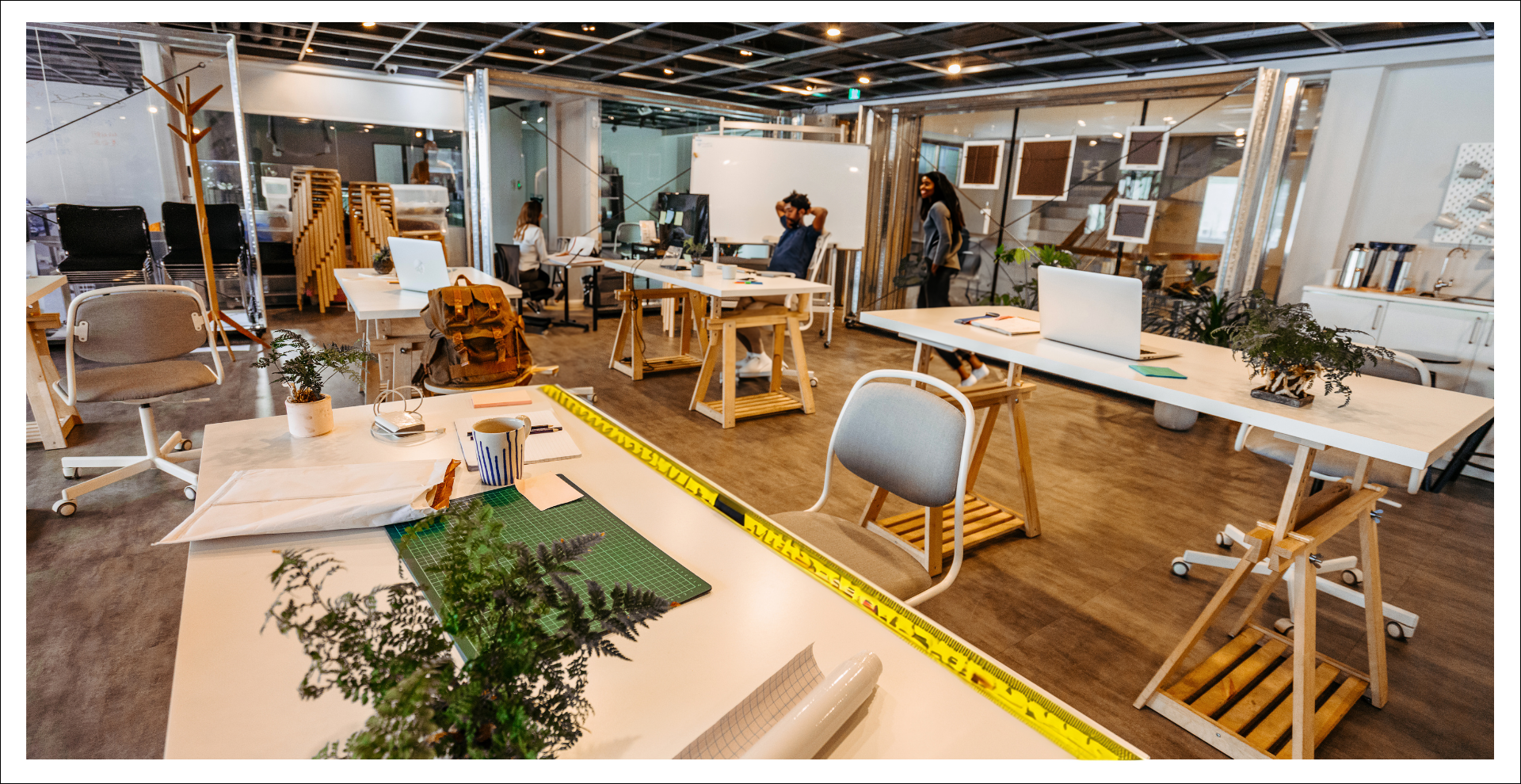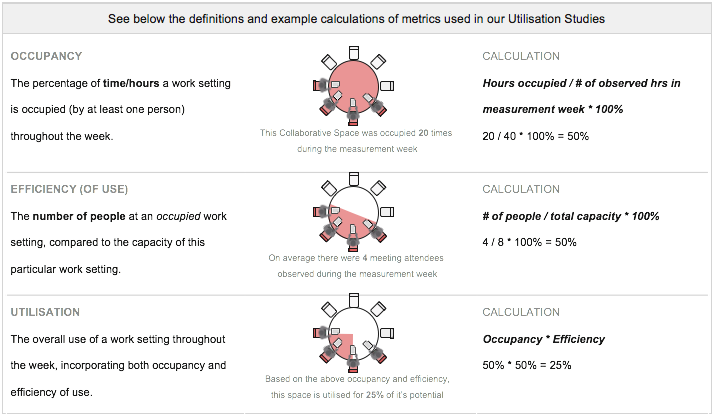
1. Workplace utilisations change over the years
Over the years, workplace occupancy levels have decreased, due to the expanding numbers of tasks and activities knowledge workers have to perform to fulfil their roles within their organisation. A (fully ergonomic) workstation in an office environment simply doesn’t support all the activities knowledge workers perform at work nowadays, and therefore gets occupied a lot less than 40 hours a week.
2. Occupancy levels have dropped
Our utilisation benchmark shows that in 2016, occupancy levels dropped to 35%-45% for individual workstations and to 25%-35% for enclosed collaborative spaces - and that was a pre-pandemic figure! Taking the astronomical prices for real estate into account, the conclusion that most organisations waste a lot of money on underutilised space is easily made.
3. Measure occupancy
Measuring the occupancy and utilisation of your workplace, informs you on the effectiveness of use of space and shows potential discrepancies between the need for individual and collaborative spaces and the current supply hereof. This of course, with the goal of aligning the needs of your employees.
4. And don’t forget the efficiency
At Veldhoen + Company we’re not just measuring occupancy levels, though. In order to obtain a fine grained snapshot of the current utilisation of your workspace, we also measure the efficiency of use of space. Where occupancy details how well a workstation or collaborative space is used in terms of time (hours per week), the efficiency informs how well each occupied space is used in terms of capacity. Taken together, the occupancy and the efficiency form the utilisation, or effectiveness of use of space.
5. Occupancy x Effectiveness = Utilisation
A meeting space that is occupied 50% of the working week, and when occupied only 50% of the seats are taken, is utilised for only 25% of its full potential. By measuring the occupancy and efficiency levels, we can map/plot the need for collaborative spaces. Both the number of spaces, as well as the size of these spaces can be estimated, based on your current utilisation.

So, is anything I’ve said so far new and/or exciting information?
Probably not, as many workplace analysts most likely have similar benchmark figures and already execute utilisation studies in a similar fashion, or will do after reading this blog. What is exciting, at least to us, and (potentially) new for you, is the fact that we integrate hard, quantitative data from a physical perspective – such as utilisation data – with qualitative insights around the culture and strategy of our clients to create an integrated view on what the ideal future workplace and way of working looks like.
For in the end, it’s not about the building…



